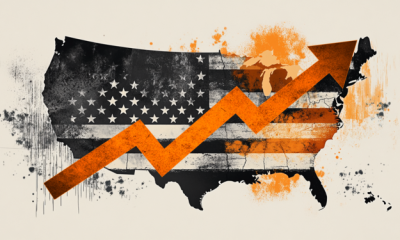

others
US Dollar consolidates gains ahead of US macroeconomic data – Crypto News
- US Dollar struggles to build on Wednesday’s gains.
- The US Dollar Index consolidates in a narrow range above 100.00.
- US weekly Initial Jobless Claims and June Existing Home Sales data will be released on Thursday.
The US Dollar (USD) finds it difficult to preserve its strength early Thursday after having outperformed its major rivals on Wednesday. The US Dollar Index (DXY), which tracks the USD’s valuation against a basket of six major currencies, went into a consolidation phase above 100.00 ahead of US data releases.
The US Department of Labor will publish the weekly Initial Jobless Claims data, and the National Association of Realtors (NAR) will release the Existing Home Sales data for June later in the day.
Daily digest market movers: US Dollar stabilizes on Thursday
- The Wall Street Journal reported early Thursday that the United States banned 14 Iraqi banks from using the USD in transactions on suspicion of these banks funneling USDs to Iran.
- China’s ambassador to Washington, Xie Feng, said late Wednesday that China would respond if the US were to impose more curbs on the country’s chip sector.
- Nasdaq Futures are down nearly 1% on Thursday following uninspiring earnings from big US tech firms after the closing bell on Wednesday.
- The Federal Reserve Bank of Atlanta’s GDPNow model forecasts a 2.4% US GDP growth in the second quarter.
- The monthly data published by the US Census Bureau showed Wednesday that Housing Starts declined 8% on a monthly basis in June, following the 15.7% increase (revised from +21.7%) recorded in May. In the same period, Building Permits fell 3.7%, swinging from May’s 5.6% increase.
- The USD managed to capture capital outflows out of Pound Sterling early Wednesday after data from the UK showed that inflation softened at a faster pace than expected in June. Furthermore, the sharp upsurge seen in the USD/JPY pair following Bank of Japan (BoJ) Governor Kazuo Ueda’s dovish comments reaffirmed strengthening demand for the USD.
- Retail sales in the US rose 0.2% in June to $689.5 billion, the US Census Bureau reported on Tuesday. The 0.3% increase recorded in May had been forecast to reach 0.5% in June, but the data came in far below. Retail Sales Ex-Autos increased 0.2% in the same period, coming in also slightly below the market expectation of 0.3%.
- Industrial production in the US contracted 0.5% for the second straight month in June, data from the US Federal Reserve showed Tuesday.
- The benchmark 10-year US Treasury bond yield clung to modest recovery gains near 3.8% on Thursday.
- US Treasury Secretary Janet Yellen told Bloomberg on Monday that there is a good chance that the Biden administration will go ahead with outbound investment controls on China.
- The US Dollar weakened significantly last week as soft inflation data revived expectations about the Federal Reserve reaching the terminal rate with a 25-basis-point (bps) rate hike in July.
- The Consumer Price Index (CPI) in the US rose 3% on an annual basis in June, following the 4% increase recorded in May. The annual Producer Price Index (PPI) edged 0.1% higher in the same period.
- Commenting on the USD’s outlook: “In case of an increasingly rapid fall in inflation and weakening economic data, the market might increasingly rely on key rates not remaining at high levels for a long time, whereas rate cuts before the end of the year are becoming increasing likely,” said Antje Praefcke, FX Analyst at Commerzbank. “That would cause the USD to ease further.”
Technical analysis: US Dollar Index stays on the back foot
The Relative Strength Index (RSI) indicator on the daily chart rose above 30 on Wednesday but turned sideways on Thursday, suggesting that the US Dollar Index (DXY) remains technically bearish following a short-lasting correction.
On the downside, critical support is located at 100.00 (psychological level). If the DXY index makes a daily close below that level, sellers could take action. In that case, 99.20 (static level from March 2022) aligns as next support before 99.00 (psychological level) and 98.30 (200-week Simple Moving Average).
Looking north, 100.50 (Wednesday high) forms interim resistance before 101.00 (former support, static level), 101.50 (static level) and 101.80 (20-day Simple Moving Average).
Fed FAQs
Monetary policy in the US is shaped by the Federal Reserve (Fed). The Fed has two mandates: to achieve price stability and foster full employment. Its primary tool to achieve these goals is by adjusting interest rates.
When prices are rising too quickly and inflation is above the Fed’s 2% target, it raises interest rates, increasing borrowing costs throughout the economy. This results in a stronger US Dollar (USD) as it makes the US a more attractive place for international investors to park their money.
When inflation falls below 2% or the unemployment rate is too high, the Fed may lower interest rates to encourage borrowing, which weighs on the Greenback.
The Federal Reserve (Fed) holds eight policy meetings a year, where the Federal Open Market Committee (FOMC) assesses economic conditions and makes monetary policy decisions.
The FOMC is attended by twelve Fed officials – the seven members of the Board of Governors, the president of the Federal Reserve Bank of New York, and four of the remaining eleven regional Reserve Bank presidents, who serve one-year terms on a rotating basis .
In extreme situations, the Federal Reserve may resort to a policy named Quantitative Easing (QE). QE is the process by which the Fed substantially increases the flow of credit in a stuck financial system.
It is a non-standard policy measure used during crises or when inflation is extremely low. It was the Fed’s weapon of choice during the Great Financial Crisis in 2008. It involves the Fed printing more Dollars and using them to buy high grade bonds from financial institutions. QE usually weakens the US Dollar.
Quantitative tightening (QT) is the reverse process of QE, whereby the Federal Reserve stops buying bonds from financial institutions and does not reinvest the principal from the bonds it holds maturing, to purchase new bonds. It is usually positive for the value of the US Dollar.
-

 Technology4 days ago
Technology4 days agoChatGPT users are mass cancelling OpenAI subscriptions after GPT-5 launch: Here’s why – Crypto News
-
Technology1 week ago
Binance to List Fireverse (FIR)- What You Need to Know Before August 6 – Crypto News
-

 Technology1 week ago
Technology1 week agoBest computer set under ₹20000 for daily work and study needs: Top 6 affordable picks students and beginners – Crypto News
-
Technology1 week ago
Beyond Billboards: Why Crypto’s Future Depends on Smarter Sports Sponsorships – Crypto News
-
Cryptocurrency1 week ago
Cardano’s NIGHT Airdrop to Hit 2.2M XRP Wallets — Find Out How Much You Can Get – Crypto News
-
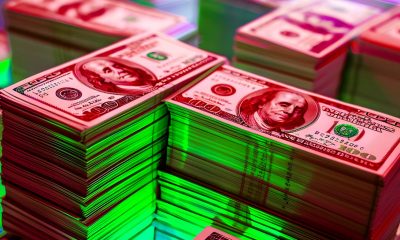
 others1 week ago
others1 week agoBank of America CEO Denies Alleged Debanking Trend, Says Regulators Need To Provide More Clarity To Avoid ‘Second-Guessing’ – Crypto News
-

 Cryptocurrency1 week ago
Cryptocurrency1 week agoTron Eyes 40% Surge as Whales Pile In – Crypto News
-

 Cryptocurrency1 week ago
Cryptocurrency1 week agoEthereum Hits Major 2025 Year Peak Despite Price Dropping to $3,500 – Crypto News
-

 Technology1 week ago
Technology1 week agoGoogle DeepMind CEO Demis Hassabis explains why AI could replace doctors but not nurses – Crypto News
-
Business1 week ago
Analyst Spots Death Cross on XRP Price as Exchange Inflows Surge – Is A Crash Ahead ? – Crypto News
-

 De-fi1 week ago
De-fi1 week agoTON Sinks 7.6% Despite Verb’s $558M Bid to Build First Public Toncoin Treasury Firm – Crypto News
-

 De-fi1 week ago
De-fi1 week agoCircle Extends Native USDC to Sei and Hyperliquid in Cross-Chain Push – Crypto News
-

 Blockchain1 week ago
Blockchain1 week agoXRP Must Hold $2.65 Support Or Risk Major Breakdown – Analyst – Crypto News
-

 Blockchain1 week ago
Blockchain1 week agoXRP Must Hold $2.65 Support Or Risk Major Breakdown – Analyst – Crypto News
-
Business1 week ago
Is Quantum Computing A Threat for Bitcoin- Elon Musk Asks Grok – Crypto News
-

 Technology1 week ago
Technology1 week agoElon Musk reveals why AI won’t replace consultants anytime soon—and it’s not what you think – Crypto News
-
others1 week ago
Japan CFTC JPY NC Net Positions down to ¥89.2K from previous ¥106.6K – Crypto News
-

 Cryptocurrency1 week ago
Cryptocurrency1 week agoHow to Trade Meme Coins in 2025 – Crypto News
-

 others1 week ago
others1 week agoIs Friday’s sell-off the beginning of a downtrend? – Crypto News
-
others1 week ago
Pi Network Invests In OpenMiind’s $20M Vision for Humanoid Robots- Is It A Right Move? – Crypto News
-
Business1 week ago
Pi Network Invests In OpenMiind’s $20M Vision for Humanoid Robots- Is It A Right Move? – Crypto News
-

 Technology1 week ago
Technology1 week agoOppo K13 Turbo, K13 Turbo Pro to launch in India on 11 August: Expected price, specs and more – Crypto News
-
Blockchain1 week ago
Shiba Inu Team Member Reveals ‘Primary Challenge’ And ‘Top Priority’ Amid Market Uncertainty – Crypto News
-

 Technology1 week ago
Technology1 week agoOpenAI releases new reasoning-focused open-weight AI models optimised for laptops – Crypto News
-

 Blockchain7 days ago
Blockchain7 days agoCrypto Market Might Be Undervalued Amid SEC’s New Stance – Crypto News
-

 Metaverse7 days ago
Metaverse7 days agoChatGPT won’t help you break up anymore as OpenAI tweaks rules – Crypto News
-

 De-fi6 days ago
De-fi6 days agoCoinbase Pushes for ZK-enabled AML Overhaul Just Months After Data Breach – Crypto News
-
Cryptocurrency3 days ago
DWP Management Secures $200M in XRP Post SEC-Win – Crypto News
-

 Cryptocurrency1 week ago
Cryptocurrency1 week agoTron Eyes 40% Surge as Whales Pile In – Crypto News
-
others1 week ago
SharpLink Buys the Dip, Acquires $100M in ETH for Ethereum Treasury – Crypto News
-

 others1 week ago
others1 week agoVisa and Mastercard’s Payment Dominance Not Threatened by Stablecoins, According to Execs – Crypto News
-
Business1 week ago
Breaking: U.S. CFTC Kicks off Crypto Sprint, Explores Spot and Futures Trading Together – Crypto News
-

 Cryptocurrency1 week ago
Cryptocurrency1 week agoLido Slashes 15% of Staff, Cites Operational Cost Concerns – Crypto News
-
others1 week ago
MetaPlanet Launches Online Clothing Store As Part of ‘Brand Strategy’ – Crypto News
-

 Technology7 days ago
Technology7 days agoiPhone users alert! Truecaller to discontinue call recording feature for iOS from September 30. Here’s what you can do… – Crypto News
-

 Technology7 days ago
Technology7 days agoiPhone users alert! Truecaller to discontinue call recording feature for iOS from September 30. Here’s what you can do… – Crypto News
-
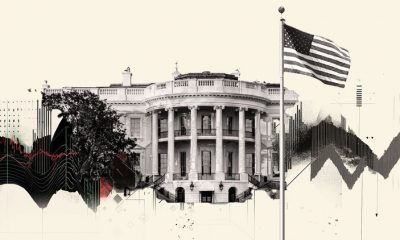
 others6 days ago
others6 days agoUS President Trump issues executive order imposing additional 25% tariff on India – Crypto News
-
Business6 days ago
Analyst Predicts $4K Ethereum Rally as SEC Clarifies Liquid Staking Rules – Crypto News
-

 De-fi6 days ago
De-fi6 days agoSEC Says Some Stablecoins Can Be Treated as Cash, but Experts Warn of Innovation Risk – Crypto News
-
Business6 days ago
XRP Price Prediction As $214B SBI Holdings Files for XRP ETF- Analyst Sees Rally to $4 Ahead – Crypto News
-
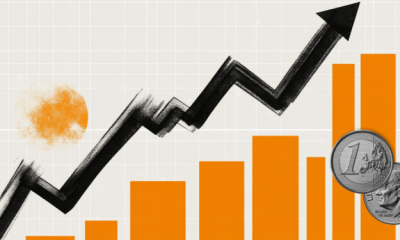
 others5 days ago
others5 days agoEUR firmer but off overnight highs – Scotiabank – Crypto News
-

 Blockchain5 days ago
Blockchain5 days agoTrump to Sign an EO Over Ideological Debanking: Report – Crypto News
-

 De-fi5 days ago
De-fi5 days agoRipple Expands Its Stablecoin Payments Infra with $200M Rail Acquisition – Crypto News
-

 others4 days ago
others4 days agoRipple To Gobble Up Payments Platform Rail for $200,000,000 To Support Transactions via XRP and RLUSD Stablecoin – Crypto News
-
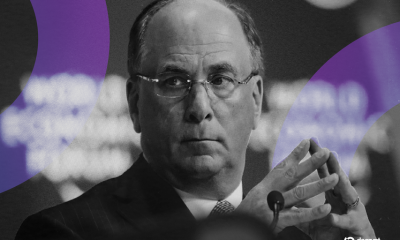
 Cryptocurrency4 days ago
Cryptocurrency4 days agoHarvard Reveals $116 Million Investment in BlackRock Bitcoin ETF – Crypto News
-

 Technology4 days ago
Technology4 days agoHumanoid Robots Still Lack AI Technology, Unitree CEO Says – Crypto News
-

 Technology1 week ago
Technology1 week agoAmazon Great Freedom Festival Sale 2025 vs Flipkart Freedom Sale: Comparing MacBook deals – Crypto News
-
Business1 week ago
India’s Jetking Targets 21,000 Bitcoin By 2032 As CFO Foresees $1M+ Price – Crypto News
-

 De-fi1 week ago
De-fi1 week agoCrypto Markets Stall as Trump’s Crypto Policy Report Fails to Spark Momentum – Crypto News
-

 Blockchain1 week ago
Blockchain1 week agoSharpLink Buys $54M in ETH, Holdings Reach $1.65B – Crypto News





